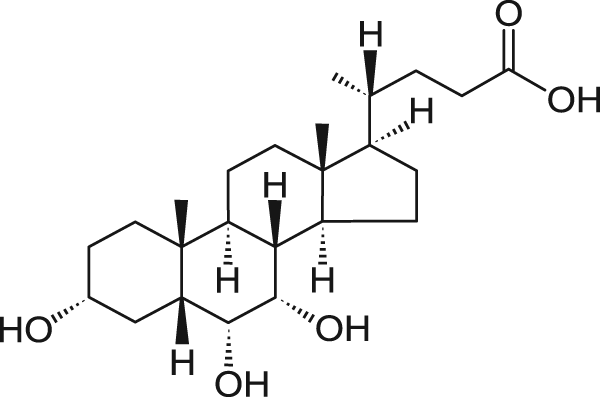700159 | Hyocholic acid
3α,6α,7α-trihydroxy-5ß-cholanic acid

Please Confirm Your Location
Effective March 1, 2018, Merck KGaA, Darmstadt, Germany* is the exclusive Distributor of Avanti Research. Research Products for all countries except the United States. For product pricing and order placement, please click on the appropriate Location Box below.
For customers located outside the United States, you will be redirected to www.sigmaaldrich.com/avanti prior to completing your purchase. Thank you for your continued business and support of Avanti Research!
*The life science business of Merck KGaA, Darmstadt, Germany operates as MilliporeSigma in the U.S. and Canada
Hyocholic acid
3α,6α,7α-trihydroxy-5ß-cholanic acid
Hyocholic acid (HCA) is found in trace amounts in humans, but it’s a primary bile acid (BA) in pigs (roughly about 76% of the BA pool in pigs).
It’s commonly referred to as:
- - Iocholic acid
- - Hyocholate
- - α-Hyocholic acid
- - Hyocholsaure
This compound is a trihydroxy-5β-cholanic acid in which there are three hydroxy substituents at positions 3α, 6α, and 7α. The enzyme that catalyzes the 6-hydroxylation process of chenodeoxycholic acid in pigs is the cytochrome P450 CYP4A21.
Having a third hydroxyl group at 6α-position is what differs Hyocholic acid from the primary bile cholic and chenodeoxycholic acids. Hyocholic acids are different from muricholic acids, as well, since they are 6β-hydroxylated. So, Hyocholic acid is a C24-steroid, a 6α-hydroxy steroid, and a 7α-hydroxy steroid.
Hyocholic acid is present at very low concentrations in human blood and urine. However, it’s often found in patients with cholestasis, and it’s usually increased after sleeve gastrectomy to manage obesity.
Hyocholic acid is also known to improve glucose metabolism and aids glucose homeostasis through a TGR5 and FXR signaling mechanism. It shows exceptional resistance to spontaneous diabetic phenotypes in pig and mouse models.
According to recent studies, Hyocholic acid has low toxicity against human hepatoma HepG2 cells.
In addition, Hyocholic acid is widely used as an internal standard for the quantitation of human fecal bile acids. This is a valuable method for the quantitative investigation of fecal bile acids, which is crucial to sterol balance studies.
Discover whether Hyocholic acid can serve as a diagnostic marker of metabolic disorders with the best quality Hyocholic acid from Avanti Research.
CAS Registry Number is a Registered Trademark of the American Chemical Society
Ronda OAHO, van Dijk TH, Verkade HJ, Groen AK. Measurement of Intestinal and Peripheral Cholesterol Fluxes by a Dual-Tracer Balance Method. Curr Protoc Mouse Biol. 2016 Dec 1;6(4):408-434. doi: 10.1002/cpmo.16. PMID: 27906461.
PubMed ID: 27906461- Certificate of Analysis (Lot No. 700159P-5MG-A-010 and 5218PHA010)
- Certificate of Analysis (Lot No. 700159P-5MG-B-010 and 5218PHB010)
- Certificate of Analysis (Lot No. 700159P-5MG-C-010 and 5218PHC010)
- Certificate of Analysis (Lot No. 700159P-5MG-D-010 and 5218PHD010)
- Certificate of Analysis (Lot No. 700159P-5MG-E-010 and 5218PHE010)
- Certificate of Analysis (Lot No. 700159P-5MG-F-010 and 5218PHF010)
- Certificate of Analysis (Lot No. 700159P-5MG-B-011 and 5218PHB011)
- Certificate of Analysis (Lot No. 700159P-5MG-C-011 and 5218PHC011)



